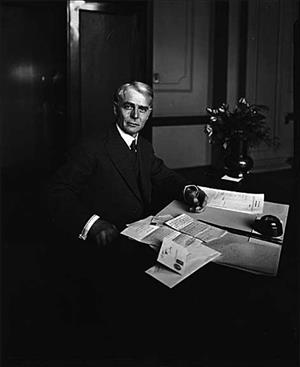On June 20, 1961, the town of Lake Forest Park in King County incorporates. The town was first developed in the early twentieth century by realtor (and later Seattle mayor) Ole Hanson (1874-1940). It grew slowly through nearly all of the twentieth century until a series of annexations in the mid-1990s tripled both its size and population. Lake Forest Park is located near and along Lake Washington's northwestern shoreline about 10 miles northeast of downtown Seattle, and in 2015 has a population of approximately 13,000.
Beginnings
Lake Forest Park can trace its beginnings back centuries, when it was a winter village site for the Snohomish tribe. Non-Indian settlers first arrived in the 1860s, and for the rest of the nineteenth century settlers and loggers shared the land with the tribal members. By the early twentieth century increasing settlement led to the departure of the Native Americans and a few years later to the development of Lake Forest Park, which was named after Lake Forest in Illinois.
The initial development was led by Ole Hanson, a Seattle-area realtor who saw the community's scenic potential. During the early 1910s he and his nephew, Alexander Reid, developed lots designed to flow with the contours of the lands and to preserve the community's park-like atmosphere. Existing trees were left standing whenever possible, and restrictions were placed on development. Houses were welcome but apartments were not, and shacks, saloons, and roadhouses were also prohibited. The community grew slowly through the next five decades, and by 1960 it had about 1,300 residents happily living in harmony with nature.
Incorporation
But the little paradise had a problem. Seattle was growing and its northern suburbs were expanding toward Lake Forest Park. People saw the urban sprawl headed their way and debated how to deal with it. When plans were announced to build a shopping center on a 17-acre tract of land on the northwestern corner of the intersection at Bothell Way NE and Ballinger Way NE, locals came together to incorporate the little community as a fourth-class town and to try to stop development of the shopping center. The county merely excluded the tract from the boundaries of the proposed town and allowed development of the shopping center to proceed, but Lake Forest Park likewise proceeded with its incorporation election.
The election took place on June 6, 1961, and was not without the chicanery that often occurs in municipal incorporations. The morning before the election, residents discovered that more than 100 pro-incorporation signs had been torn down in their yards. Pro-incorporation forces complained even more loudly on Election Day when they learned that the three judges conducting the election were all opposed to incorporation. Yet in the end the fuss was for naught. Incorporation passed handily, with more than 57 percent of nearly 600 voters voting yes, and it became official on June 20. Four days later, the town celebrated with a "fun frolic" and also swore in its first mayor, Francis Holman, and its first town councilmen: Dr. Cecil Feasel, James Hunt, Herbert Metke, Robert Middleton, and E. E. Raymond.
Lake Forest Park Today
Forest Park Center, the shopping center that had been the catalyst for Lake Forest Park's incorporation, opened in October 1964 -- two years after the new town annexed the site and embraced the shopping center as its own. Today (2015) the complex, now known as the Town Center at Lake Forest Park, serves both as a multi-purpose shopping center and the community hub.
Lake Forest Park graduated from a town to a city in 1966 and, other than a pause in the 1970s, grew steadily for the next 25 years. But this paled in comparison to what followed. During the mid-1990s a series of annexations tripled the size of the city and its population, from 4,031 in 1990 to 13,142 in 2000. The twenty-first century has so far been quieter in Lake Forest Park, which has maintained a mostly stable population since 2000.
Lake Forest Park's population was 12,598 in the 2010 Census, and its land area was reported to be 3.53 square miles. The city's median household income in 2013 was estimated at $99,669, considerably higher than the $71,811 median estimate for King County, but its housing prices, averaging $428,048 in 2013, were not much higher than the county average. Eighty-two percent of Lake Forest Park's residents were Caucasian, making it a somewhat whiter community than King County as a whole, and nearly 70 percent of the city's residences were identified as "family households" by City-Data.com.

